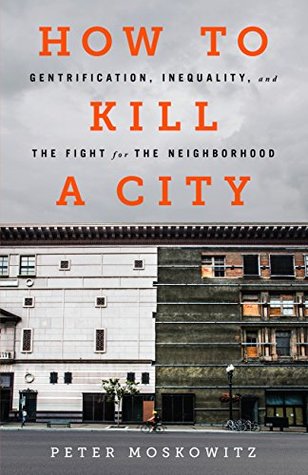More on this book
Community
Kindle Notes & Highlights
Read between
February 28 - March 23, 2025
White volunteers and whites working for nonprofits have replaced much of the black middle-class labor force here. It’s hard to get accurate numbers on exactly how many white non-natives came to work in nonprofits and schools after the storm, but anecdotes from residents here suggest there are quite a few. There were at least 375 Teach for America members in New Orleans schools by 2013. Hundreds of Habitat for Humanity volunteers from across the country constructed homes for free that might have otherwise been built by local laborers.
In a stretch of Midtown Manhattan, which has recently become filled with sky-high multimillion-dollar condo buildings, a New York Times investigation found that 50 percent of apartments are vacant for the majority of each year. In other words, the fifth and last phase of gentrification is when neighborhoods aren’t just more friendly to capital than to people but cease being places to live a normal life, with work and home and school and community spaces, and become luxury commodities.
In nearly every city in the United States, the public housing stock has been decimated by a federal program called Hope VI, which was instituted under President Bill Clinton. The program rewards local housing authorities for demolishing traditional public housing (usually those big brick buildings that people often call “the projects”) and rebuilding with suburban-style, low-density, mixed-income housing instead. Frequently those new units are built not by housing authorities but by private developers and nonprofits. The idea behind Hope VI was to alleviate the symptoms associated with
...more
As more and more residents leave Detroit, the burden of paying for the city’s services falls on fewer and fewer households. Most residents of Detroit are poor, but they are nonetheless expected to fund roads, water lines, and everything else in the city through their property taxes, which can be thousands of dollars a year on houses that currently aren’t worth much more than $10,000 on the market.
“They sell you off to the highest bidder and that just sucks,” she said. “The house has been in my family for forty years. Why can’t they buy a vacant home instead of putting someone out on the street?” There’s a perverse answer to Bryant’s question, an activist from Detroit Eviction Defense explained to me one day: Detroit may have tens of thousands of vacant homes, but the ones that have been lived in have usually been maintained lovingly by the people living in them. The roof repairs, flooring, lighting, and yard upkeep have already been paid for by the existing tenants. Kicking people out
...more
Since they began being planned on a massive scale in the early 1930s, suburbs have always been envisioned as a way to fundamentally alter the way Americans interact with each other. They were never just about space. They were about reinvigorating the economy, yes, but they were also about more than that. The suburbs were a way to reinforce a specific way of life more favorable to the country’s ruling class. Engels had warned that mass homeownership would have the effect of “chaining workers” to the factories in which they work, therefore lessening the chance they could rebel against factory
...more
Shawn liked this
With every new condo—and most now come outfitted with things like gyms and pools, day care centers, and bars in their lobby—it seems like cities become a bit more like vertical gated communities. Soon you’ll be able to live in a city without experiencing it at all.
The more we practice intentional and community-oriented living, the less useful we will be as consumers. Radicalism is not a matter of wishing for a revolution, but a process consisting of thousands of little actions that build toward personal and global change.
Shawn and 1 other person liked this


